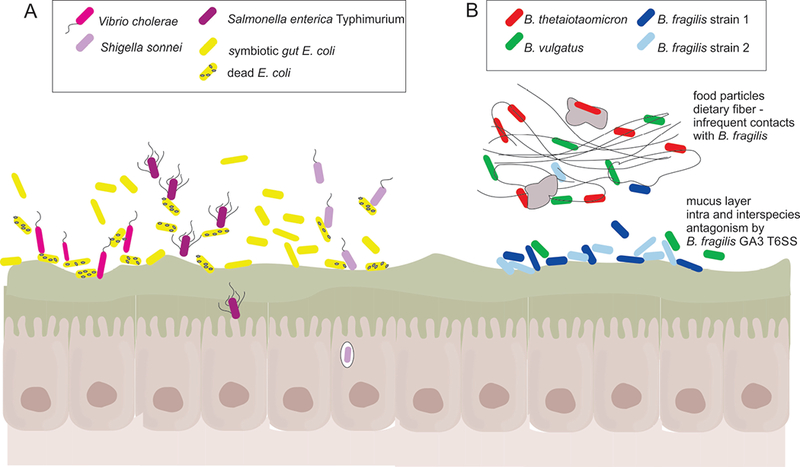Figure 2.

T6SS mediated antagonism in the mammalian gut. A. Three different Proteobacterial enteric pathogens, Vibrio cholerae, Salmonella enterica Typhimurium, and Shigella sonnei use T6SSs to target resident gut E. coli to overcome colonization resistance and cause disease in animal models (33–37). In the case of V. cholerae, the lysed E. coli initiate innate immune responses that upregulate virulence factors and increase dissemination (33). B. Bacteroides fragilis GA3 T6SS antagonize nearly all gut Bacteroidales species in vitro. In vivo, strong antagonistic effects are seen between two distinct B. fragilis strains likely due to their localization at the mucosal surface where they will make frequent contacts. This intraspecies antagonism may lead to the dominance of one strain. B. vulgatus was also significantly antagonized by a B. fragilis GA3 T6SS, possibly due to overlapping nutritional niches. In contrast, a significant antagonistic effect by the GA3 T6SS of B. fragilis was not observed when co-inoculated with B. thetaiotaomicron. These varied effects may be due to the substrate preferences of these species that may spatially segregate them under normal dietary conditions.
